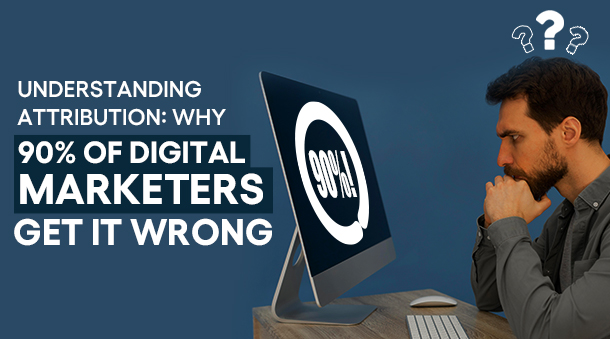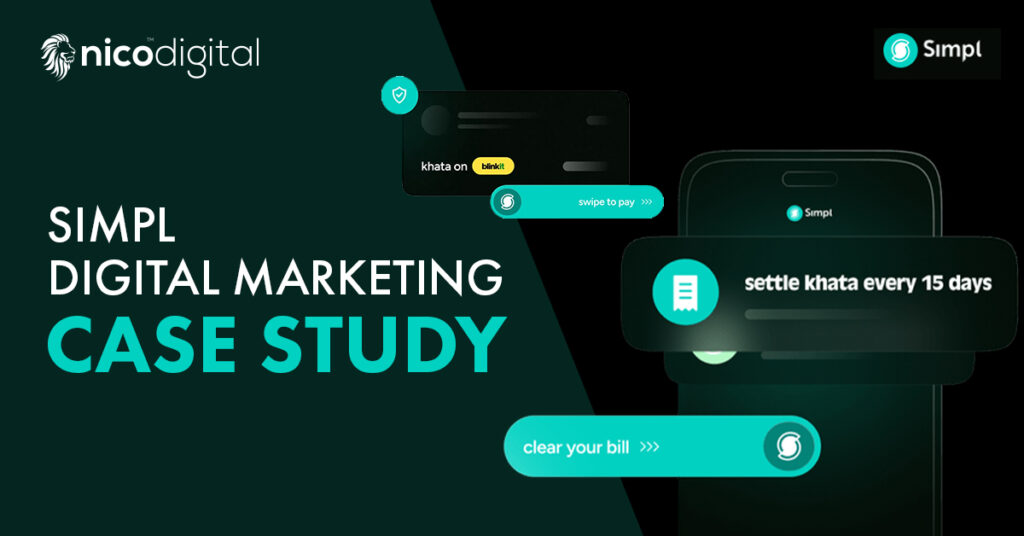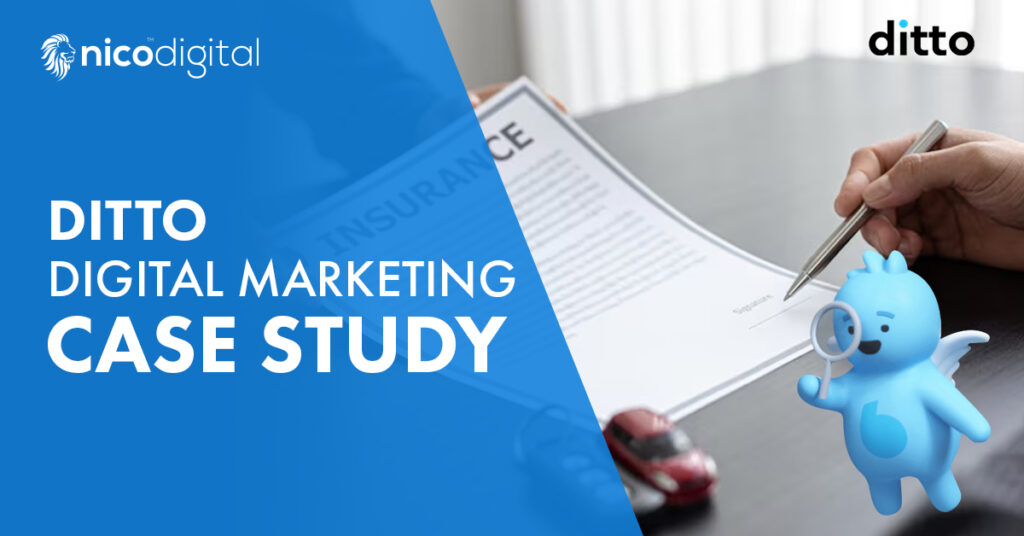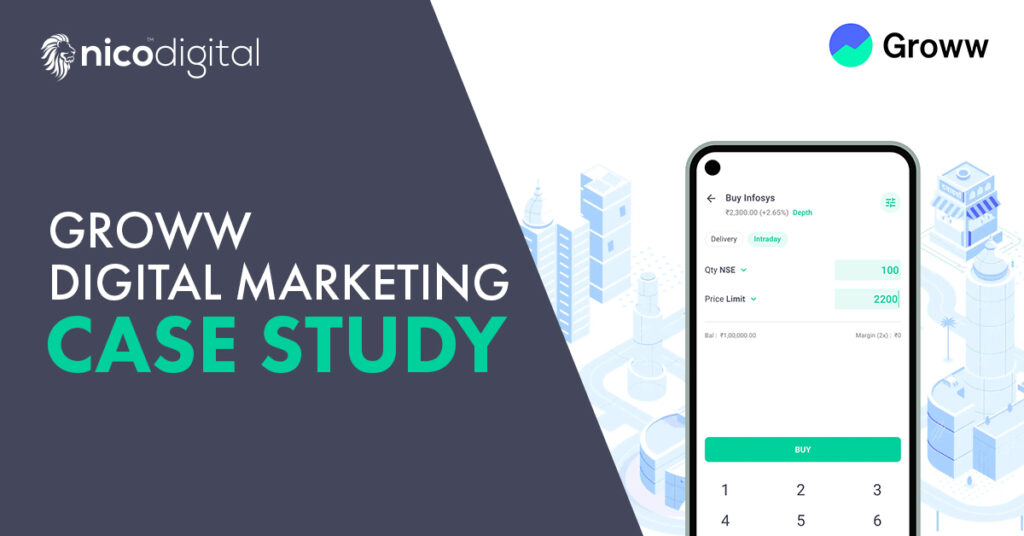
Attribution in digital marketing is a key concept that helps businesses understand how their different marketing channels contribute to customer conversions.
And one of the hottest topics in digital marketing right now is attribution. However, despite its importance, most marketers out there, (even you) struggle to get it right.
And it’s normal in today’s times. Look at what the data has to say – A staggering 90% of digital marketers get it wrong!
This ultimately leads to ineffective strategies and wasted resources, which hinder growth and reduce ROI.
Thus, in this blog, we shall seek to simplify the concept of attribution and identify common mistakes most marketers make. And if you read through all of it, expect to get some great actionable steps to improve your marketing strategies
Table of Contents
What Is Attribution in Digital Marketing?
Digital marketing attribution is the process through which we get to identify which marketing touchpoints contribute to a conversion or sale. You can think of attribution as a way to understand your customer journey.
For example, suppose a customer sees a Facebook ad, opens a newsletter, clicks on an email link, and then finally makes a purchase through a Google search. Now, how do you decide which channel gets the credit?
Well, this is where attribution comes into play.
And, understanding the role of each touchpoint in the customer journey is crucial for creating effective marketing strategies.
Why Is Marketing Attribution Important?
Marketing attribution can offer a range of benefits to your marketing teams. Let’s have a look.
1. Allocate Budgets Wisely
One of the most important benefits of attribution is that it can help in budget allocation. Today’s marketing landscape is competitive and budgets are often limited. Therefore, knowing where to invest to have the biggest impact is helpful. Attribution is useful in this situation because it enables marketers to determine which campaigns and channels are generating the highest conversion rates.

Source: Netimperative
For example, suppose an attribution model reveals that paid social media ads are responsible for 40% of conversions while organic search contributes 20%. Thus, you can prioritise social media campaigns without completely disregarding SEO efforts. This ensures that your marketing spend is directed toward activities that deliver the most measurable results.
2. Measure ROI Accurately
One challenging task for digital marketers is accurately measuring return on investment. This is where attribution serves as a bridge between marketing activities and financial results. Thus, you get to calculate ROI with greater precision.
Traditional methods of measuring ROI, such as last-touch attribution, often paint an incomplete picture. This is because they may overemphasise the value of one touchpoint while neglecting the contributions of others.
A robust attribution model provides a more nuanced understanding of how each channel, campaign, or strategy contributes to the bottom line.
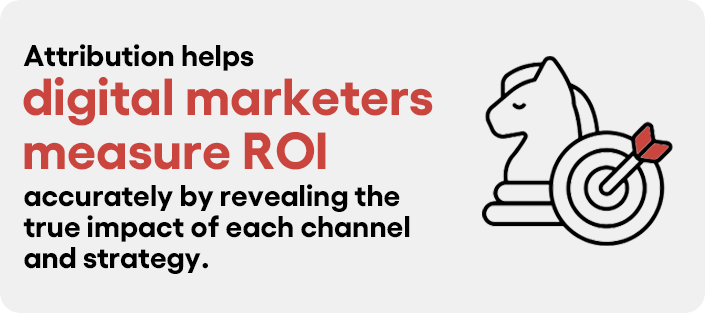
For example, imagine you’re running multiple campaigns across email, social media, and paid search. Without attribution, you might feel that paid search is the primary driver of conversions. However, with a multi-touch attribution model, you will discover that email campaigns play a critical role in getting leads that eventually convert through paid search. Thus, this insight ensures that ROI calculations reflect the true impact of each channel.
3. Understand Customer Behavior
Digital marketing attribution provides you with a window into the complex journey customers take before making a purchase or completing a certain desired action. Consumers of today interact with brands through multiple touchpoints, which include social media, email, search engines, and even offline channels. Attribution helps unravel this complexity by showing HOW and WHEN customers engage with your brand.
Understanding customer behavior through attribution can reveal surprising patterns. For example, you might find that customers often interact with your blog posts before clicking on a retargeting ad to make a purchase. And you never thought they were reading through your content.

This insight highlights the importance of educational content in the customer journey, allowing you to create more of it.
Now that you have some idea of the benefits attribution brings, let’s look at some of the common attribution models that exist in marketing
Common Attribution Models
Below are some of the most common digital marketing attribution models used by marketers. It helps to know these attribution modelling basics to understand how credit is assigned to different touchpoints in a customer’s journey. So, let’s have a look.
1. First-Touch Attribution
First-touch attribution connects conversion to the customer’s initial engagement with your brand. For example, suppose a potential customer clicks on a Facebook ad and then later makes a purchase after engaging with other touchpoints. Thus, in this attribution model, the Facebook ad would receive all the credit.
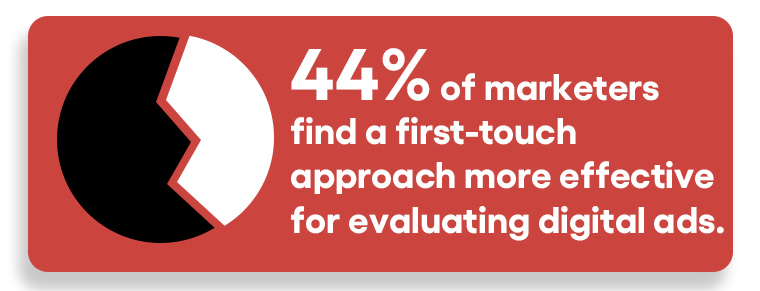
Source: Ruler Analytics
This model is helpful for efforts that only aim to improve brand recognition. It assists marketers in determining which platforms work best for reaching new consumers with their brand.
However, it has its limitations. By recognizing only the first interaction, it overlooks the role of other touchpoints down the customer journey in nurturing the lead or closing the sale.
2. Last-Touch Attribution
Last-touch attribution assigns all credit for a conversion to the final interaction that a customer has with your brand before completing the desired action. Thus, the name – last touch.
For example, if a customer sees a Google ad, signs up for your newsletter, and finally clicks an email link to purchase, the email link will receive all the credit.

Source: Netimperative
This model is simple to implement and is also widely used because it directly ties conversions to the final step. It’s also helpful for sales-focused campaigns, where understanding the final push to convert can be crucial.
However, the downside to it is that it ignores the role of earlier interactions that helped nurture the lead.
3. Linear Attribution
Linear attribution divides the credit equally across all touchpoints in the customer journey. For example, if a customer interacts with a Facebook ad, a Google search, and an email campaign before making a purchase, then each of these channels would receive equal credit for the conversion.
This attribution model provides a balanced view. It recognizes that every touchpoint contributes to the customer journey. It’s useful for businesses with long or complex sales cycles, where multiple channels work together to guide the customer toward conversion.

However, linear attribution does not account for the varying influence of each touchpoint. Some touchpoints may have played a more significant role than others, and equal distribution might oversimplify the journey.
4. Time-Decay Attribution
Customer touchpoints that take place closer to the conversion are given more weight in this attribution approach. For example, if a customer engages with a blog post a month before purchasing and then clicks on a retargeting ad the day before buying, the retargeting ad receives more credit.
Businesses with shorter sales cycles, where recent encounters frequently have the most impact on a customer’s journey, can benefit from this model. Time-decay attribution recognises that while earlier touchpoints are important for creating awareness, later interactions are critical for driving action.

Its drawback is that it might undervalue upper-funnel activities like lead nurturing and initial brand discovery. It is ideal for marketers who want to focus on touchpoints that directly affect the decision-making stage of a customer’s journey.
5. Data-Driven Attribution
So, if all digital marketing attribution models have certain drawbacks, then what could be an ideal attribution model? Well, we present to you, the latest and most studied model – data-driven attribution.
Data-driven attribution uses machine learning algorithms to analyse historical data and then assign credit to touchpoints based on their actual impact on customer conversions. Unlike the other predefined models, this approach evaluates each touchpoint’s contribution using patterns and performance metrics unique to your business.
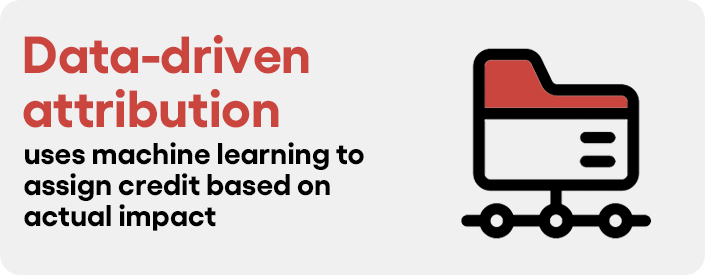
For instance, if data reveals that customers who engage with a specific social media post are more likely to convert, the model will assign more credit to that touchpoint. Similarly, it can account for interactions that influence different segments of your audience. This helps to provide a customised and accurate view of the customer journey.
Data-driven attribution is highly accurate and insightful. However, it requires significant data and advanced tools. Also, there is a steep learning curve to it, which is why most marketing teams will have an expert who works on gathering data for this model.
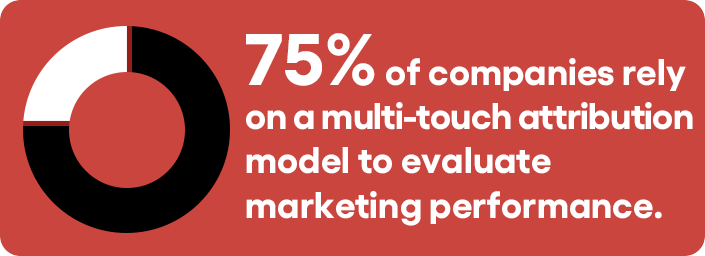
Source: Ruler Analytics
Why Do Most Marketers Get Attribution Wrong?
Below are some reasons why most marketers get attribution wrong. So, you don’t.
1. Overreliance on Last-Touch Attribution
Many marketers rely solely on last-touch attribution. Why? Because it’s simple and easy to understand. However, this model ignores all other interactions that led to the conversion. This gives a false picture of performance.
2. Ignoring Multi-Touch Journeys
Today’s customer journey is complex. It involves multiple touchpoints across various platforms. Ignoring these interactions means missing valuable insights.
3. Lack of Data Integration
Marketing data is often siloed across different tools and platforms. This makes it hard to get a unified view of customer behavior. Also, many marketers fail to ensure that their data is accurate and reliable. This leads to misleading conclusions.
4. Failure to Test and Adjust
There isn’t a single attribution mechanism that works for everyone. Inaccuracies result from failing to test several models and modify them in accordance with your particular business requirements.
5. Misinterpreting Data
Attribution data is only as good as the interpretation. Misreading it can lead to poor decisions, like cutting budgets for high-performing channels.
6. Neglecting External Factors
Attribution models that only consider internal data may overlook certain external factors that influence customer behavior, like seasonability or market trends. Thus, incorporating these elements into attribution analysis can help provide deeper insights into what drives performance.
Thus, these are some of the common attribution mistakes most marketers make.
Marketers also face certain challenges when trying to understand attribution. Below is a infographic that helps you understand the most common problems and the percentage of marketers who face them.
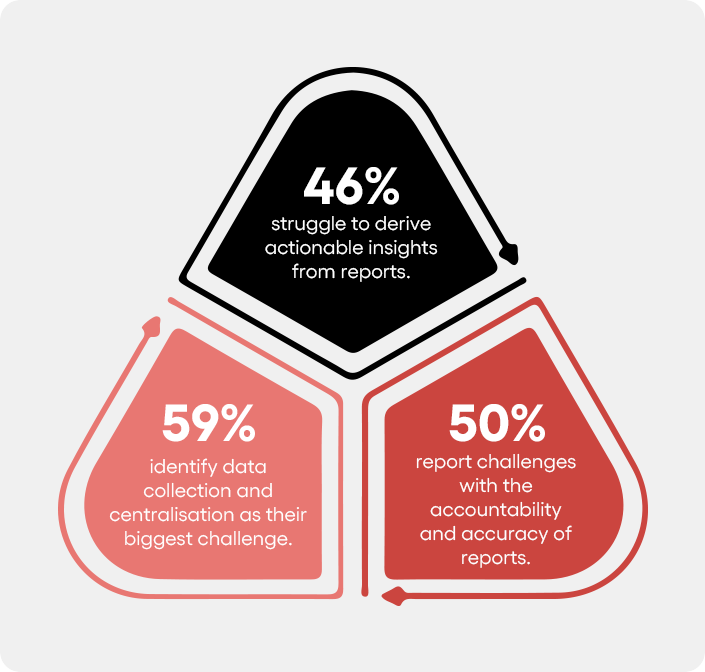
Source: Netimperative
So, what’s the right way to attribution? Well, check these points out.
How to Get Attribution Right?
Now let’s address the elephant in the room. How do you even get attribution right? Well, here are some steps we have collected that will help you get the most out of your marketing attribution model.
1. Understand Your Customer Journey
Create a map of the interactions your customers have with your brand. Are they finding you by word-of-mouth, search engines, or social media? Thus, when you have a thorough understanding of your customer journey, you will be able to better select your attribution models.
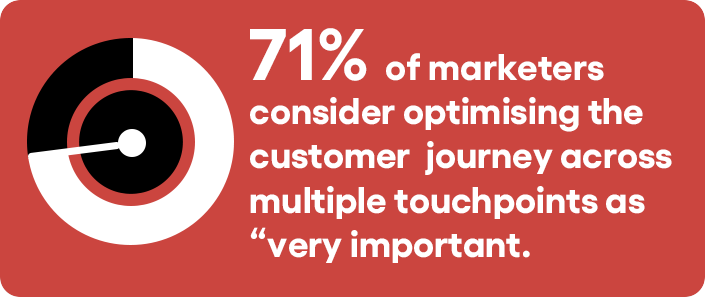
Source: Adobe
2. Choose the Right Attribution Model
Select a model that aligns with your business goals:
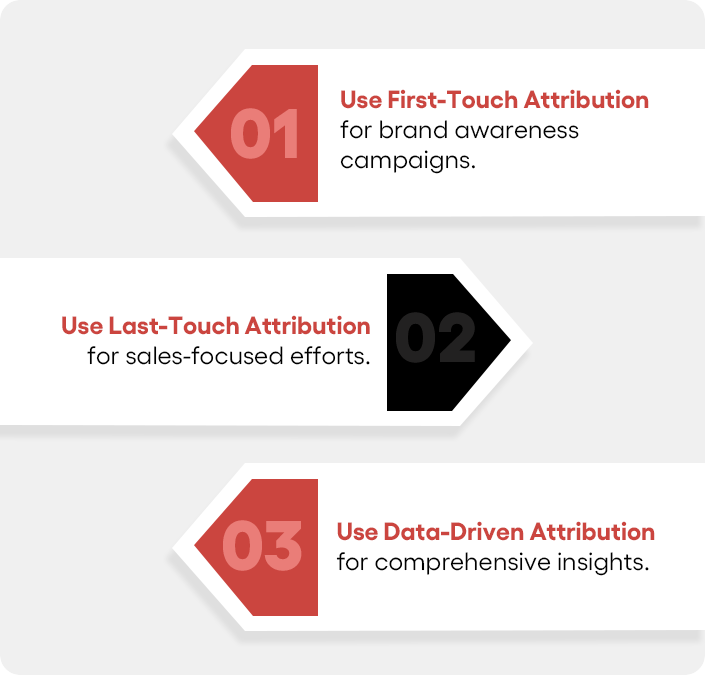
3. Integrate Your Data
A cornerstone of effective attribution is to integrate your data. You can combine data from several channels into a single, cohesive dashboard by utilizing tools like HubSpot, Google Analytics, or other marketing platforms. You will have a comprehensive understanding of how your campaigns function across many touchpoints thanks to this centralization.
4. Test and Refine
Attribution is not a one-size-fits-all solution.
Target audiences, marketing objectives, and customer journeys vary throughout businesses. Thus, testing several attribution models is therefore crucial to determine which one performs best.
For example, a last-touch attribution model may offer lucid insights if your company has a short sales cycle. On the other hand, multi-touch or time-decay models may produce more accurate findings over longer sales cycles.
You can start by comparing the insights from different models. Tools like Google Analytics allow you to switch between models, such as first-touch, last-touch, and linear attribution. This helps you to see how each model impacts your understanding of campaign performance. So, assess which model aligns most closely with your business outcomes. Also, don’t hesitate to tweak it as needed.
5. Leverage Advanced Tools
Remember how we talked about data-driven attribution?
Well, advanced attribution tools like Google’s Data-Driven Attribution or Adobe Analytics take the guesswork out of assigning credit to touchpoints. These tools use machine learning algorithms to analyse historical data, customer interactions, and conversion patterns. This marketing performance measurement helps deliver more precise insights than traditional models.
For example, Google’s Data-Driven Attribution evaluates how various channels contribute to conversions based on past performance. This allows you to see which touchpoints truly drive results. Unlike first-touch or last-touch models, this approach accounts for the unique nuances of your customer journey, and offers a highly customised view of attribution.

Source: Ruler Analytics
Adobe Analytics goes a step further by providing robust cross-channel analytics. This enables marketers to track customer interactions across websites, apps, and offline channels. Its machine learning capabilities identify trends and predict future behaviors, and help you optimise your campaigns proactively.
Let’s consider a scenario where a hypothetical e-commerce business has noticed a sharp decline in sales, despite it increasing its marketing budget.
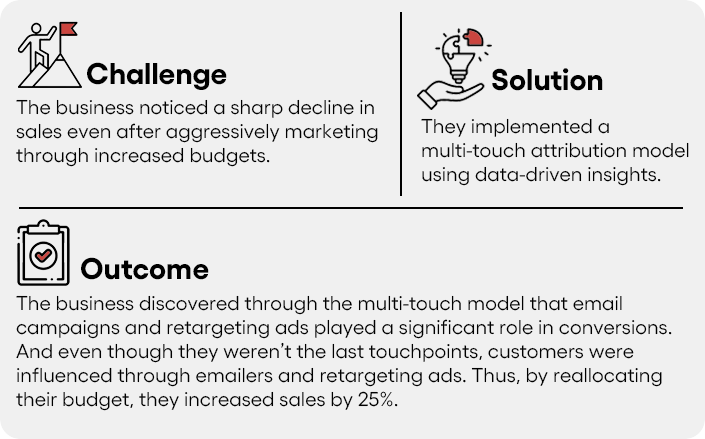
This example highlights the power of proper attribution in driving better results.
Wrapping it up
Attribution is critical to the success of any digital marketing strategy. However, it’s an area where most marketers fail. The key is to understand your customer journey, choose the right attribution model, and continuously refine your approach.
By getting attribution right, you can optimise your marketing efforts, allocate your budget more effectively, and ultimately drive better results for your business.
At Nico Digital, we don’t just market your brand – we craft strategies that drive real results. From SEO to digital PR, our expert team knows the exact touchpoints for your customer base to make your business stand out in today’s competitive landscape.
Contact us today for a customised digital marketing solution!

